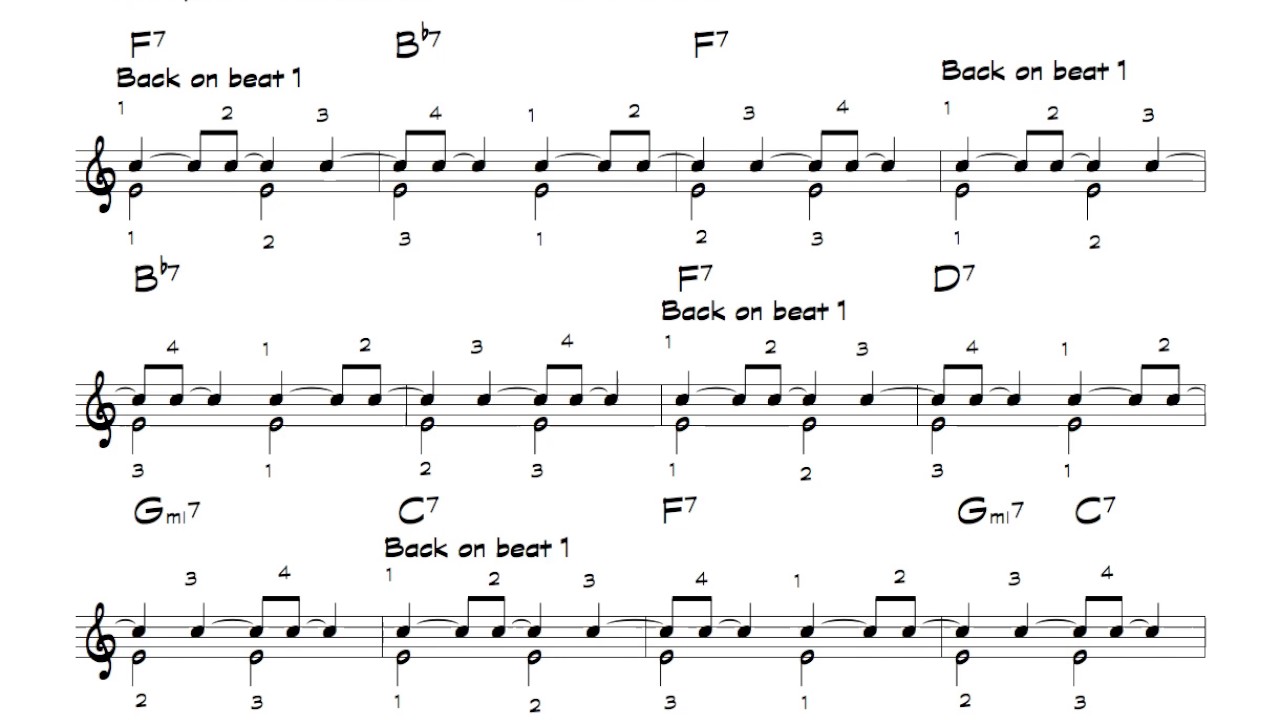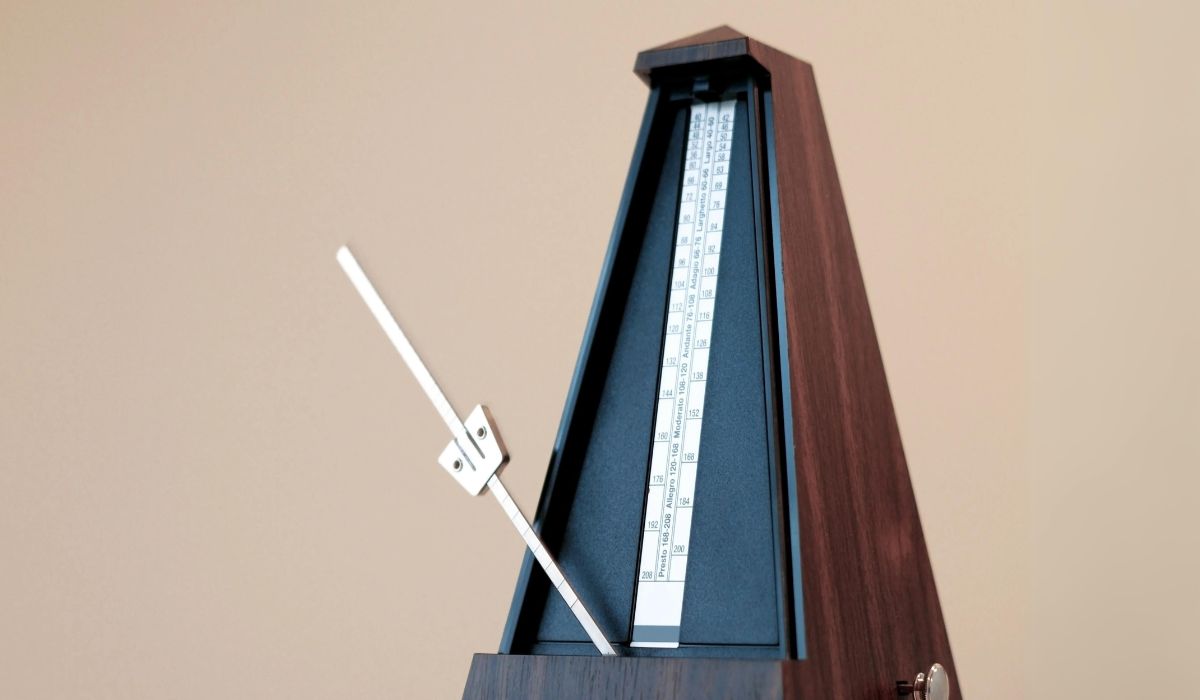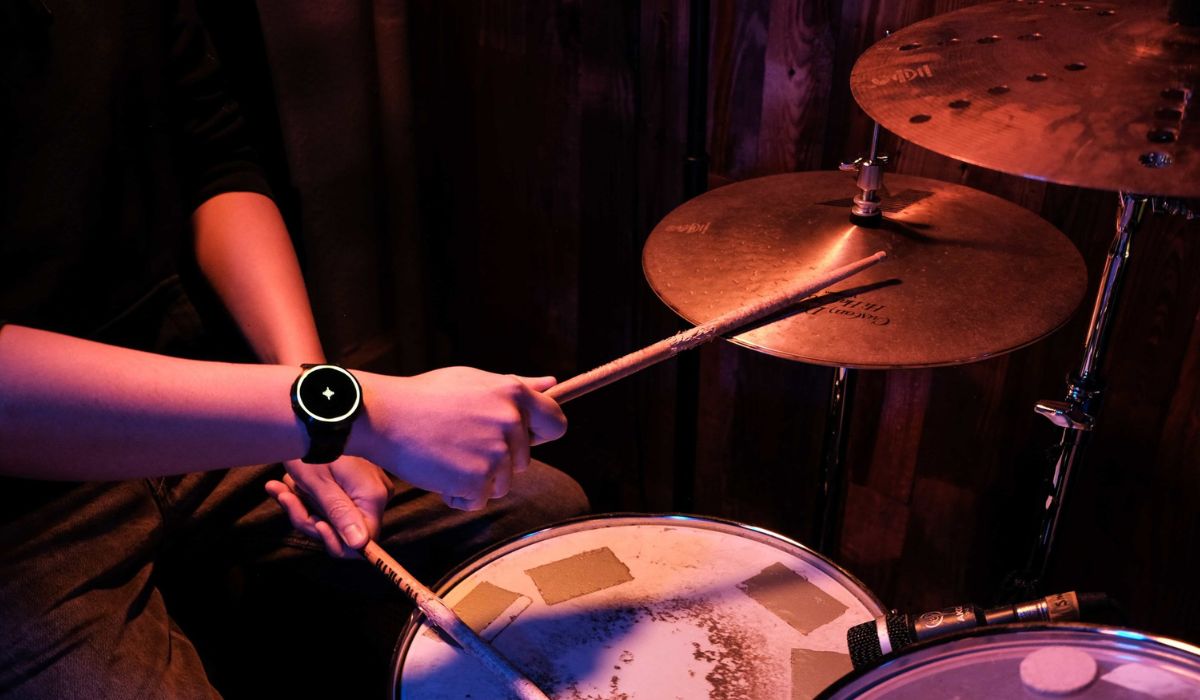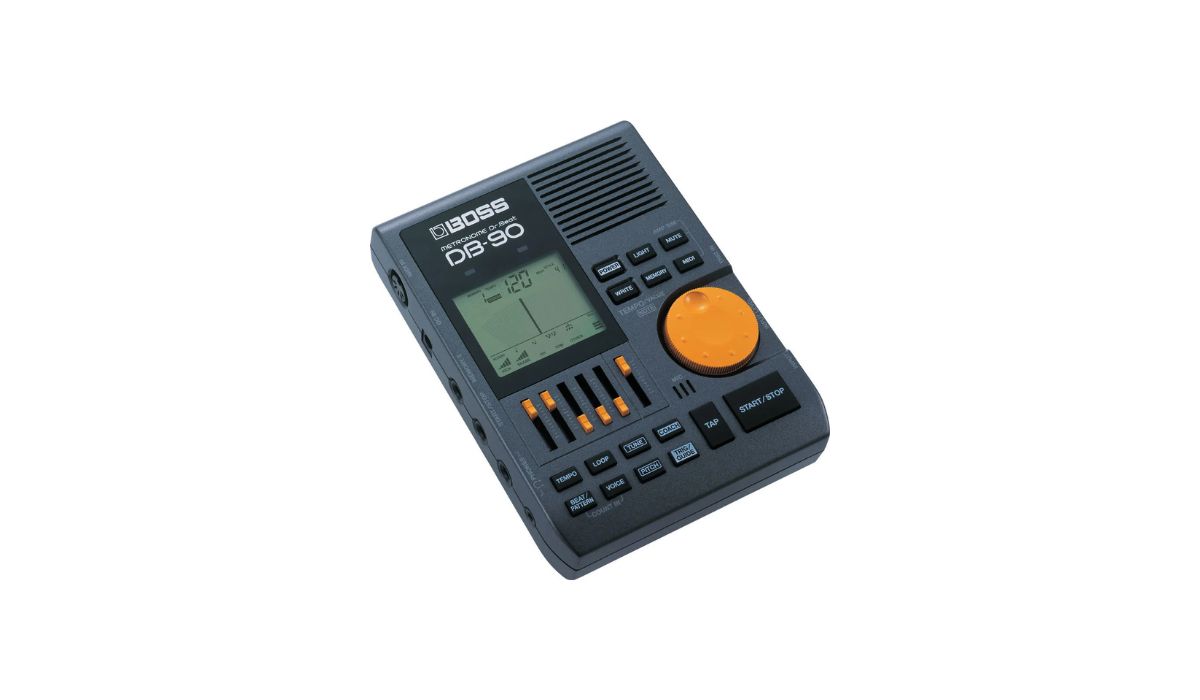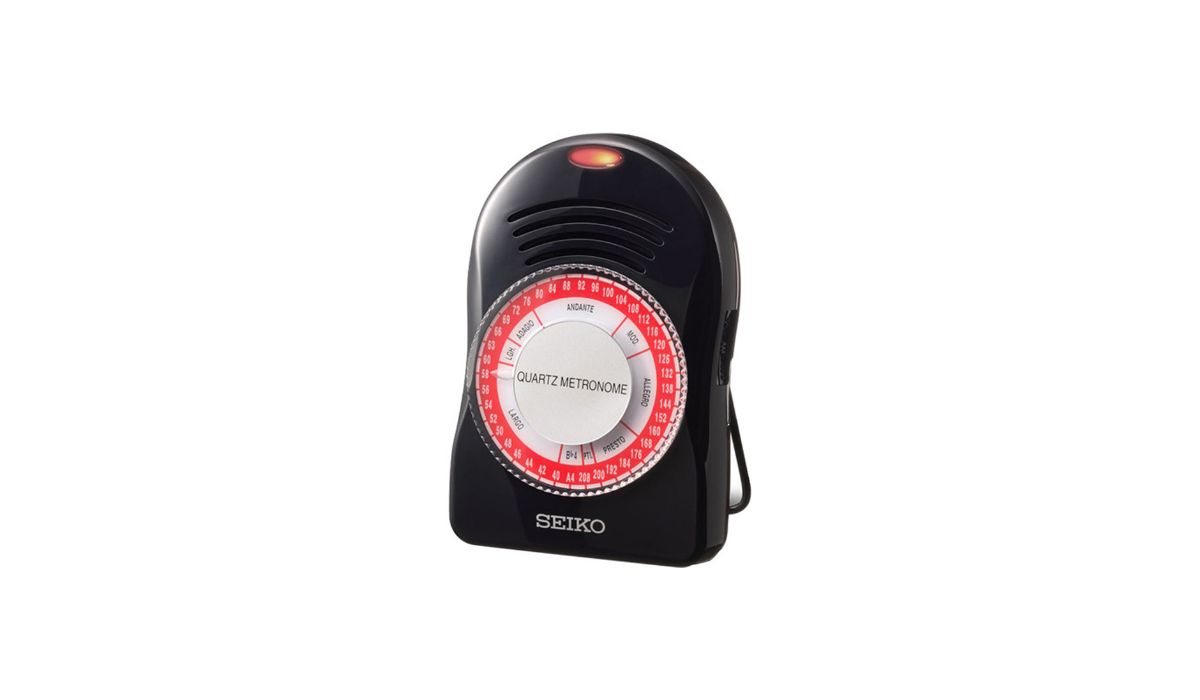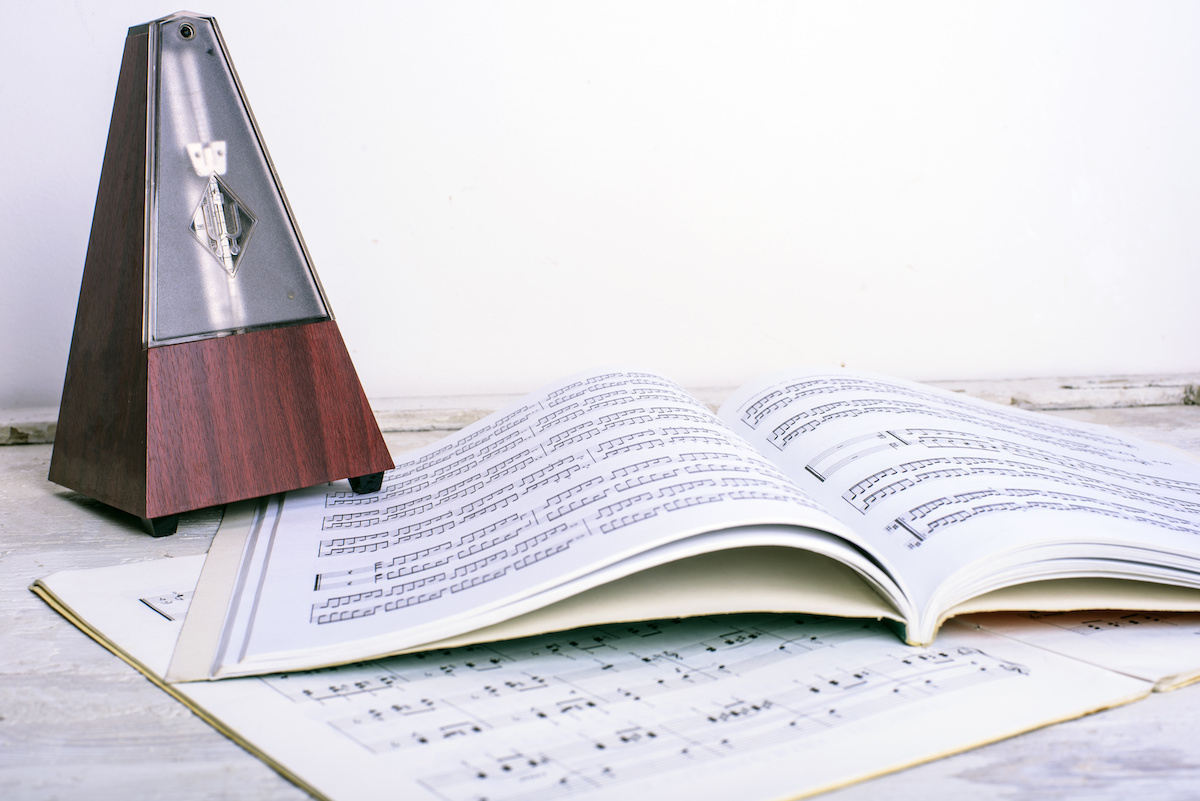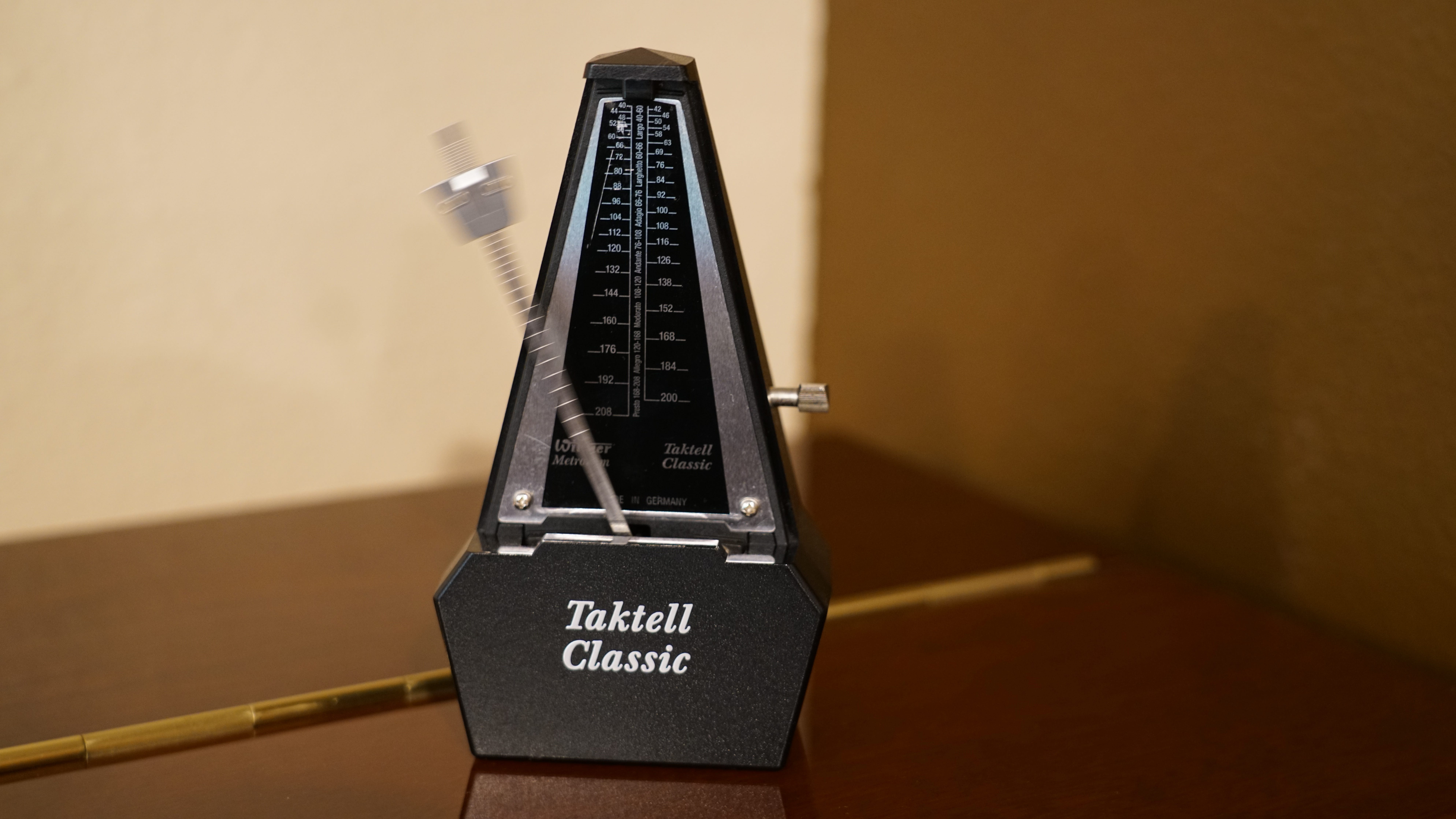Home>Production & Technology>Metronome>What Is The Metronome


Metronome
What Is The Metronome
Published: January 13, 2024
Learn the importance of using a metronome in music practice and how it can improve your timing and rhythm. Discover the benefits of incorporating a metronome into your daily routine.
(Many of the links in this article redirect to a specific reviewed product. Your purchase of these products through affiliate links helps to generate commission for AudioLover.com, at no extra cost. Learn more)
Table of Contents
Introduction
Are you a musician looking to improve your timing and rhythm? If so, a metronome is an essential tool that can take your musical skills to the next level. Whether you’re a beginner or an experienced professional, using a metronome can greatly enhance your musical performance by helping you maintain a steady tempo.
What exactly is a metronome? In its simplest form, a metronome is a device that produces regular, consistent ticks or beats at a specific tempo. It is used by musicians of all genres to practice their timing, build their sense of rhythm, and develop a steady beat.
The history of the metronome traces back to the early 19th century when it was first invented by Johann Nepomuk Maelzel, a German inventor and musician. Since then, the metronome has become an indispensable tool for musicians around the world, helping them to keep time and improve their performance skills.
Using a metronome may seem simple, but its benefits are far-reaching. It allows musicians to maintain a consistent tempo, ensures accurate timing, and helps in developing a strong internal rhythm. Furthermore, the metronome can be used by musicians of all levels and instruments, making it a versatile and indispensable tool in any musician’s arsenal.
There are different types of metronomes available today, ranging from traditional mechanical ones to digital and app-based versions. Each type has its own unique features and advantages, making it easier for musicians to choose the one that suits their needs best.
In this article, we will explore the world of metronomes in detail, discussing their functions, types, benefits, and how to use them effectively. Whether you’re a guitarist, pianist, drummer, or vocalist, by the end of this article, you’ll have a comprehensive understanding of the metronome and how it can enhance your musical abilities.
Definition of a Metronome
A metronome is a device or tool that generates regular ticks or beats at a specified tempo. It is used by musicians to maintain a consistent tempo and rhythm during practice or performance. The word “metronome” is derived from the Greek words “metron” (measure) and “nomos” (law or rule), emphasizing its role in establishing and regulating musical time.
Traditionally, metronomes were mechanical devices that consisted of a pendulum or a rotating wheel connected to a mechanism that produced audible clicks or beats. These mechanical metronomes required winding up and had a tempo adjuster to set the desired beats per minute (BPM).
In the modern era, electronic metronomes have gained popularity. These digital metronomes use quartz crystal oscillators to produce precise and consistent beats. They feature LCD displays for visual tempo indication and often include additional features such as different time signatures, subdivisions, and even built-in rhythm patterns.
With advancements in technology, metronome apps have also become widely available for smartphones and tablets. These apps offer the convenience of a metronome on the go, providing musicians with a portable and versatile tool for practicing their timing and rhythm.
A metronome typically allows musicians to adjust the tempo according to their needs, ranging from slow tempos for practicing difficult passages to fast tempos for building speed and precision. It provides musicians with a constant audible reference to stay in sync and helps develop a strong sense of timing and rhythm.
Metronomes are commonly used across various musical genres and instruments. Musicians such as drummers, guitarists, pianists, vocalists, and orchestral performers all benefit from using a metronome to improve their precision, timing, and overall musicianship.
In summary, a metronome is a device that provides a consistent beat at a specified tempo, helping musicians maintain proper timing and rhythm. Whether it is a traditional mechanical metronome, a digital metronome, or a smartphone app, this invaluable tool is essential for any musician striving to enhance their musical abilities and deliver a polished performance.
History of the Metronome
The invention of the metronome is credited to Johann Nepomuk Maelzel, a German inventor and musician, who patented it in 1815. Maelzel’s metronome was a mechanical device consisting of a pendulum attached to a weight that could be set at different speeds to generate regular ticks or beats.
Prior to the metronome, musicians relied on various methods to establish and maintain tempo. These included using conducting gestures, using the regular beat of a harpsichord, or even relying on the natural rhythm of the music. However, these methods were imprecise and lacked consistency.
Maelzel’s invention revolutionized the way musicians approached rhythm and timing. With the metronome, musicians could now have an accurate and reliable reference for maintaining a consistent tempo. It provided a standardized method of measuring and controlling musical time.
Throughout the 19th and 20th centuries, the metronome saw significant advancements. Various inventors and companies introduced improvements to its design and functionality. The mechanical metronomes became more compact and portable, allowing musicians to easily carry them to rehearsals or performances.
In the late 20th century, electronic metronomes emerged, replacing the mechanical ones. These electronic metronomes utilized quartz crystal oscillators to generate precise and consistent beats. They offered more features such as visual displays, adjustable tempo subdivisions, and even built-in rhythm patterns.
With the rise of digital technology, metronome apps became popular in the 21st century. Musicians could now conveniently access a metronome on their smartphones or tablets, eliminating the need for a physical device. These apps provided additional functionalities like adjustable sound options, customizable time signatures, and synchronization with other musicians.
The metronome’s impact on the field of music cannot be overstated. It has not only influenced the way musicians practice and perform but has also influenced composers and conductors. Composers can now indicate the desired tempo with more precision by using specific metronome markings in their scores.
Today, the metronome continues to be an indispensable tool for musicians of all genres and skill levels. It has become a fundamental component of music education, helping students develop a strong sense of timing and rhythm. Whether it’s in the practice room, the recording studio, or the concert stage, the metronome remains a constant companion for musicians striving for precision and musical excellence.
Function and Importance of a Metronome
The function of a metronome is simple yet incredibly powerful – it provides a steady and consistent beat at a specified tempo. While this may seem like a basic task, the importance of a metronome in music cannot be overstated. Here’s a closer look at the function and significance of a metronome:
1. Maintaining a Consistent Tempo: One of the primary functions of a metronome is to help musicians maintain a consistent tempo throughout their playing. By setting the metronome to the desired beats per minute (BPM), musicians can ensure that their performance remains steady and in time. This is particularly essential for ensemble playing, where all members need to synchronize their timing.
2. Developing Timing and Rhythm: The metronome is a powerful tool for developing a strong sense of timing and rhythm. By practicing with a metronome, musicians learn to internalize the pulse of the music and play in a precise and controlled manner. Regular use of a metronome helps to improve accuracy, precision, and overall musicianship.
3. Building Speed and Control: Gradually increasing the tempo on the metronome can help musicians build speed and control in their playing. By starting at a comfortable tempo and gradually pushing the boundaries, musicians can develop the technical skills needed to perform faster passages with ease. The metronome acts as a guide, allowing musicians to track their progress and push themselves further.
4. Improving Overall Musicianship: Using a metronome regularly brings significant benefits to a musician’s overall skillset. It enhances the ability to play with precision, accuracy, and confidence. Musicians who practice with a metronome develop a strong internal sense of pulse and timing, ultimately leading to improved performances.
5. Enhancing Live Performances: The discipline gained from practicing with a metronome translates to live performances. Musicians who have honed their timing and rhythm using a metronome can play confidently and maintain a consistent tempo, even in challenging situations. This is particularly crucial for performances with other musicians or accompanying a vocalist.
The importance of a metronome extends to musicians of all levels and across various musical genres. From beginners who are just starting to develop their sense of rhythm to seasoned professionals aiming for perfection, the metronome serves as a reliable guide in their musical journey.
By incorporating a metronome into practice sessions, musicians can effectively improve their timing, build their internal rhythm, and elevate their musical performances. It is an invaluable tool that no musician should overlook or underestimate.
Types of Metronomes
Metronomes have evolved over the years, and today, we have various types to choose from. Each type of metronome offers unique features and advantages, catering to the diverse needs and preferences of musicians. Here are some common types of metronomes:
- Mechanical Metronomes: These are traditional metronomes with a classic design. They feature a pendulum or a rotating wheel mechanism that creates audible ticks or beats. Mechanical metronomes are often visually appealing and add a vintage touch to the practice environment. They require manual winding and have a tempo adjuster knob to set the desired BPM.
- Electronic Metronomes: Electronic metronomes have gained popularity, replacing their mechanical counterparts. They use quartz crystal oscillators to produce precise and consistent beats. Electronic metronomes often have LCD displays that provide visual tempo indication, making it easier for musicians to track the tempo. These metronomes allow for more precise tempo adjustments and offer additional features like different time signatures, subdivisions, and rhythm patterns.
- Mobile Apps: With the advent of smartphones, metronome apps have become widely available. These apps offer the convenience of having a metronome on your mobile device. With a wide range of options available, musicians can choose from basic metronome apps to those with advanced features like customizable sounds, visual indicators, and even synchronization capabilities with other musicians. Metronome apps are portable, versatile, and often free or available at a low cost.
- Digital Metronomes: Digital metronomes are standalone devices that offer advanced features and functionalities. They typically have a compact design, making them portable and easy to bring to rehearsals or performances. Digital metronomes may offer features like adjustable volume, different sound options, visual displays, programmable rhythms, and the ability to save specific settings. Some digital metronomes even incorporate other tools like tuners and tone generators.
- Online Metronomes: Online metronomes are web-based tools that can be accessed directly from a computer or mobile device with an internet connection. These metronomes allow musicians to set the desired tempo and provide audible ticks or beats. Online metronomes often come with additional features like tempo marking options, visual indicators, and even integrated practice exercises. They are convenient for quick access and can be used anywhere with internet access.
Choosing the right type of metronome depends on personal preference, convenience, and desired features. Mechanical metronomes may appeal to those who prefer the vintage aesthetics and manual winding process. Electronic metronomes and mobile apps offer more versatility and advanced features for musicians who want more control over their practice sessions. Digital metronomes provide a combination of portability and advanced functionality, while online metronomes offer convenience and accessibility.
Regardless of the type chosen, the ultimate goal is to find a metronome that suits your needs and helps you maintain a consistent tempo, develop a strong sense of rhythm, and improve overall musicianship. With the wide range of metronomes available today, there is undoubtedly one out there to complement any musician’s practice routine and enhance their musical abilities.
How to Use a Metronome
Using a metronome effectively can greatly improve your timing, rhythm, and overall musical performance. Here are some steps to follow when using a metronome:
- Select the Tempo: Start by determining the tempo at which you want to practice. The tempo is measured in beats per minute (BPM) and represents the speed at which the metronome will provide the beats. Choose a tempo that suits the piece you are practicing or the skill you are working on.
- Set the Metronome: Based on the tempo you selected, set the metronome accordingly. For mechanical metronomes, adjust the tempo dial or pendulum weight to the desired BPM. For electronic metronomes or metronome apps, use the tempo buttons or sliders to set the desired tempo. Ensure that the metronome is audible and positioned close enough for you to hear the beats clearly.
- Start Playing: Begin playing your instrument or practicing your vocal exercises in time with the metronome beats. Focus on staying in sync with the beats and maintaining a consistent tempo. The metronome acts as your guide, helping you develop a strong sense of timing and rhythm.
- Gradually Increase the Tempo: As you become comfortable playing with the metronome at a particular tempo, gradually increase the tempo to challenge yourself. Pushing the boundaries of your speed and control will help improve your technical abilities. Increase the tempo at a comfortable rate, ensuring that you can still play accurately and maintain a steady beat.
- Practice Subdivisions and Time Signatures: Metronomes often offer the ability to practice subdivisions and different time signatures. Experiment with playing different note subdivisions (such as eighth notes or sixteenth notes) while staying in sync with the metronome beats. Additionally, practice playing in different time signatures to enhance your versatility and rhythmic understanding.
- Use Accents and Dynamics: Once you have established a steady beat with the metronome, experiment with adding accents and dynamic variations to your playing. This will help you develop expressive and nuanced performances while still maintaining a consistent tempo. The metronome will keep you grounded and prevent your timing from wavering.
- Track Your Progress: Regularly assess your progress by recording yourself playing with the metronome. Listen back to identify areas where your timing may be inconsistent or where you need to improve. Keep track of the progress you make over time, increasing your ability to play with precision and accuracy.
- Challenge Yourself: As you become more comfortable with using a metronome, challenge yourself by practicing complex musical pieces or difficult technical passages. The metronome will help you stay focused, maintain the desired tempo, and overcome challenging sections with accuracy and control.
Remember, using a metronome is a tool to guide your practice and enhance your playing. It’s important to strike a balance between relying on the metronome and developing your internal sense of timing. The ultimate goal is to play with a solid sense of rhythm while maintaining a musical and expressive performance.
By incorporating a metronome into your practice routine and following these steps, you’ll undoubtedly see progress in your timing, rhythm, and overall musicianship.
Benefits of Using a Metronome
Using a metronome in your practice sessions can have numerous benefits that contribute to your growth as a musician. Here are some key advantages of incorporating a metronome into your practice routine:
- Developing a Strong Sense of Timing: Regular practice with a metronome helps to develop your internal sense of timing. By playing in sync with the metronome beats, you train yourself to stay consistent and maintain a steady tempo. This skill is essential for playing with other musicians or in an ensemble setting.
- Improving Rhythm Accuracy: The metronome acts as a precise reference point, enabling you to improve your rhythm accuracy. It helps you to play each note or beat at the exact intended time, eliminating any tendencies to rush or drag. This level of precision is crucial for achieving a polished and professional sound.
- Enhancing Technique and Speed: Practicing with a metronome allows you to gradually increase the tempo and challenges you to develop speed and control. As you become more comfortable playing at faster tempos, your technical abilities improve, leading to cleaner and more precise execution of challenging passages.
- Building Consistency: Consistency is key to becoming a reliable and accomplished musician. Using a metronome trains you to play consistently and avoid fluctuations in tempo. This skill not only enhances your individual performances but also makes it easier to play in a synchronized manner with other musicians.
- Developing Expressive Playing: While the metronome ensures a steady tempo, it doesn’t hinder your ability to be expressive. In fact, it can help you develop expressive playing by providing a reliable rhythmic foundation. With the metronome as your guide, you can experiment with dynamics, articulations, and phrasing, knowing that your timing remains solid.
- Improving Sight-Reading Skills: When sight-reading music, the metronome serves as a valuable tool. It helps you maintain a consistent tempo and stay on track, even when encountering unfamiliar rhythms or complex notation. The metronome assists in keeping you focused, ensuring a smooth and accurate performance.
- Aiding in Music Practice Efficiency: With the metronome keeping you on track, your practice sessions become more efficient and productive. You can isolate specific sections or challenging passages and work on them at slower tempos, gradually increasing the speed until you can comfortably play them at the desired tempo. This targeted practice helps to optimize your practice time and achieve better results.
- Preparing for Performances: Practicing with a metronome prepares you for live performances. It helps to reduce anxiety, as you gain confidence in your timing and rhythm. By internalizing a steady beat, you can focus more on connecting with the music, engaging with the audience, and delivering a captivating performance.
By consistently incorporating a metronome into your practice sessions, you’ll develop a solid foundation of timing, rhythm, and technique. The benefits of using a metronome extend to musicians of all levels and across various genres. Whether you’re a beginner or an experienced performer, the metronome remains an invaluable tool in your musical journey.
Common Misconceptions About Metronomes
While metronomes are widely recognized as valuable tools for musicians, there are several misconceptions surrounding their usage and benefits. Let’s debunk some common misconceptions about metronomes:
- Metronomes Make Your Playing Mechanical: One common misconception is that using a metronome will make your playing sound robotic or mechanical. However, the metronome is a guide for maintaining a steady tempo, not a constraint on musical expression. When used correctly, the metronome actually helps you develop a solid rhythmic foundation, allowing you to add dynamics, nuances, and personal style to your playing while staying in time.
- Metronomes Are Only for Beginners: Another misconception is that metronomes are only useful for beginners. In reality, metronomes are beneficial for musicians of all skill levels. Even advanced musicians use the metronome to refine their timing, improve their technique, and perfect complex passages. It’s a tool that supports musical growth and helps maintain precision and consistency in your playing.
- Metronomes Are Limiting: Some musicians believe that relying on a metronome restricts their musical creativity or improvisation. However, the metronome serves as a foundation that allows you to explore rhythm and timing within a controlled structure. It provides a reference point from which you can experiment with different accents, syncopations, and rhythms, enhancing your musical expression rather than confining it.
- Metronomes Are Only for Classical Music: While metronomes are frequently associated with classical music, they are valuable tools for musicians across all genres. Whether you’re playing jazz, rock, blues, or any other style, a metronome can help you develop a strong sense of timing, improve your groove, and maintain consistent tempos in ensemble settings.
- You Don’t Need a Metronome If You Have Good Rhythm: Even musicians with a natural sense of rhythm can benefit from using a metronome. The metronome provides an objective and consistent reference point, helping you identify and correct subtle timing imperfections. It serves as a reliable practice partner to challenge and refine your existing sense of rhythm, further enhancing your musicality.
- Metronomes Are Only for Solo Practice: Metronomes are often associated with individual practice sessions, but they are equally valuable in group settings. When playing with a band or ensemble, using a metronome ensures that everyone stays in sync and maintains a solid tempo. It fosters better communication, enhances ensemble playing, and promotes tighter performances.
It’s important to understand that the metronome is a tool that supports and enhances your musical abilities. When used appropriately, it can help you develop a strong foundation of rhythm, timing, and precision. Embrace the metronome as a valuable resource in your musical journey, and let go of any misconceptions that may hinder your progress.
Conclusion
The metronome is a fundamental tool for musicians of all genres and skill levels. It provides a consistent beat, helps develop timing and rhythm, and enhances overall musical abilities. Despite some common misconceptions, the metronome serves as a valuable resource and should not be underestimated.
Through the use of a metronome, musicians can practice with precision, maintain a steady tempo, and refine their timing and technique. It aids in the development of a strong internal sense of rhythm, allowing for expressiveness and musical interpretation while staying in sync with the beat.
Metronomes come in various forms, including mechanical devices, electronic metronomes, mobile apps, and online tools. Each type offers unique features and advantages, ensuring that there is a metronome to suit every musician’s needs.
Key benefits of using a metronome include improving accuracy, developing consistency, building speed and control, enhancing sight-reading skills, and preparing for live performances. It is a versatile tool that aids in efficient practice sessions and contributes to overall musical growth.
While misconceptions exist about metronomes, such as their supposed limitation on creativity or their usefulness only for beginners, these are debunked by the fact that metronomes support musical expression and are beneficial for musicians at any level.
In conclusion, incorporating a metronome into your practice routine can be immensely beneficial. Embrace its guidance, set your desired tempo, and allow the steady beats to guide your playing. With time and consistent practice, you will witness a marked improvement in your timing, rhythm, technique, and overall musicianship, ultimately elevating your musical performances to new heights.

